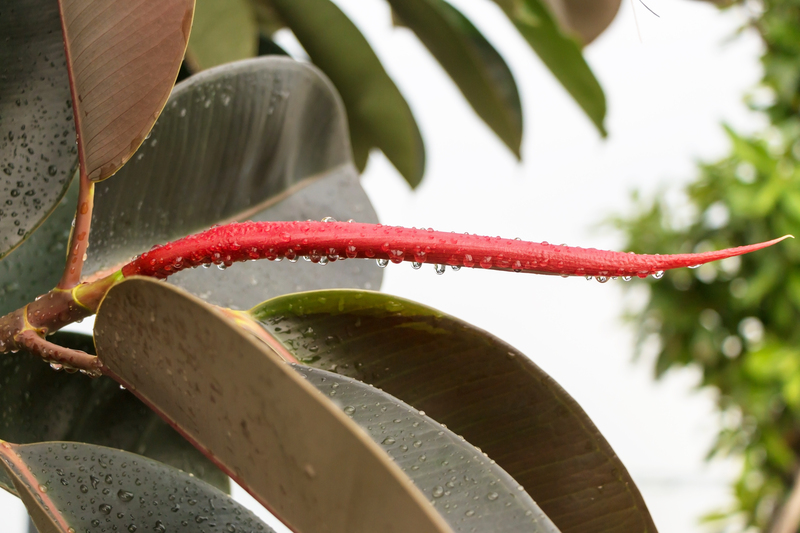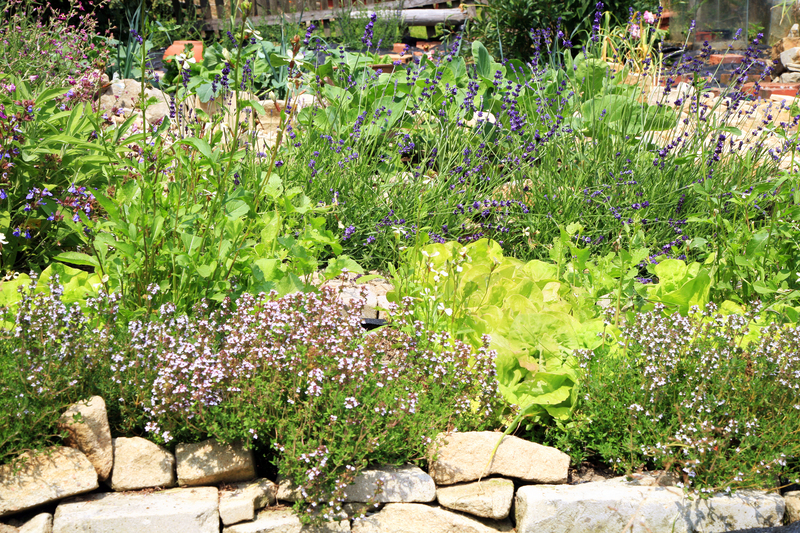Gardening on a budget: 5 easy-care strategies
Posted on 13/09/2025
Gardening on a Budget: 5 Easy-Care Strategies for Impressive Results
Gardening is a rewarding and therapeutic hobby, but many people assume it requires a significant investment of money and time. Gardening on a budget is not only achievable, but it can yield lush results without draining your wallet. Whether you're a beginner with a small urban balcony or a seasoned gardener looking to save, these five easy-care strategies will help you grow a beautiful garden while keeping expenses and labor to a minimum.

1. Start Small and Plan Smart
Assess Your Gardening Space and Needs
Before investing in plants, tools, and soil, take time to evaluate your available space and how much time you can realistically devote to low-maintenance gardening. Planning helps you avoid impulse buys that may not thrive in your environment or suit your schedule, ultimately saving you money and effort.
- Survey Sunlight: Note which areas get full sun, part shade, or full shade throughout the day.
- Evaluate Soil: Test your soil's drainage and fertility using a simple homemade jar test or affordable soil kits.
- Set Realistic Goals: Choose your focus -- flowers, herbs, veggies, or ornamentals -- based on what brings you joy and fits your lifestyle.
- Draw a Sketch: Layout your intended design on paper, mapping out beds, containers, or vertical elements to maximize your growing area.
By starting small, you limit your initial outlay and ensure each purchase is purposeful. Easy-to-manage gardens are less intimidating and more affordable, making them perfect for budget gardening enthusiasts.
2. Propagate, Swap, and Salvage Plants
Propagation: Multiply Your Greens for Free
Why buy when you can grow your own? One of the best affordable gardening strategies is plant propagation. Many plants grow easily from cuttings, seeds, or division. By multiplying what you already have, you expand your garden for pennies.
- Sow Seeds: Vegetables like lettuce, tomatoes, and beans start well from seeds. Save seeds from organic produce or swap with friends.
- Take Cuttings: Herbs (basil, mint), succulents, and certain houseplants root quickly in water or soil.
- Divide Perennials: Every few years, split mature perennials like hostas, daylilies, or ornamental grasses to create new plants.
Join Plant Swaps and Search for Freebies
Communities often host plant swap events where gardeners exchange excess seedlings, bulbs, or cuttings. Online marketplaces, social media groups, and local gardening clubs are treasure troves for free or low-cost plants and supplies. Don't be shy about asking neighbors for cuttings during their pruning sessions.
Salvage and Upcycle
Look for unwanted or discounted plants at garden centers, especially after peak seasons. Many "sick" plants can rebound with a little TLC, offering a cheap way to broaden your green palette. Reuse old containers--buckets, baskets, crates--for an eco-friendly and cost-effective touch.
3. Invest in Low-Cost, Low-Maintenance Plants
Choose Plants That Thrive with Minimal Care
Selecting easy-care, drought-resistant, and native plants is another cornerstone of gardening on a tight budget. These varieties adapt well to your local soil and weather, requiring less water, fertilizer, or special treatment. The less demanding your plant selection, the more money (and time) you save in the long run.
- Perennials: Once established, perennials return year after year with minimal upkeep. Standouts include coneflowers, black-eyed Susans, salvia, hostas, yarrow, and daylilies.
- Drought-tolerant Choices: Consider lavender, sedum, coreopsis, Russian sage, or ornamental grasses.
- Native Plants: Indigenous species are adapted to your climate, resisting pests and requiring less supplemental water or fertilizers.
- Self-Sowing Annuals: Marigolds, calendula, poppies, and sunflowers will often reseed, giving you a fresh crop next season for free!
When shopping on a budget, focus on small starter plants or multipacks of plugs; they're cheaper and adjust quickly to your garden. Avoid high-maintenance exotic plants that may need special soils, greenhouses, or frequent care.
4. Make Your Own Compost and Mulch
Composting: Turn Waste into Treasure
One of the most cost-effective frugal gardening hacks is creating your own compost from household and garden waste. Compost enriches the soil naturally, reducing the need for commercial fertilizers.
- Kitchen Scraps: Vegetable peelings, coffee grounds, eggshells, and fruit cores are perfect for composting.
- Garden Waste: Grass clippings, leaves, and non-seeding weeds break down into nutrient-rich humus.
- Avoid: Meat, dairy, oily foods, diseased plants, or anything treated with chemicals.
Start with a simple pile, homemade bin, or even a large bucket. With regular turning and moisture, you'll produce free, high-quality soil amendments in a matter of months.
Mulching: Save Water and Suppress Weeds
Mulching is an easy way to protect your plants, conserve soil moisture, and prevent weeds--saving money and labor. Shredded leaves, grass clippings, pine needles, or even newspaper layered on top of soil make excellent mulch. These materials are free and often abundant, particularly in autumn.
- Suppresses Weeds so your plants don't compete for nutrients and water.
- Improves Moisture Retention cutting down on your watering bill and time.
- Enhances Soil Health as mulch breaks down into valuable organic matter.
*Tip: Add a fresh layer of mulch each year to maintain its benefits and deter new weeds.*
5. Use Creative, Budget-Friendly Gardening Solutions
DIY Containers and Vertical Gardens
You don't need fancy pots or expensive planters to grow a thriving garden. Budget-friendly gardening thrives on creativity:
- Repurpose household items: Old tires, tin cans, pallets, buckets, and colanders can all make unique plant containers.
- Build vertical gardens: Use shoe organizers, hanging baskets, or trellises against walls and fences to maximize small spaces.
- Design raised beds with reclaimed wood or bricks salvaged from construction sites (only if untreated or non-contaminated).
Not only do these DIY options save money, but they also add whimsical charm and sustainability to your garden.
Water Wisely and Reuse Resources
Reducing water bills is a hallmark of smart gardening on a budget. Collect rainwater in barrels or buckets for irrigation, and reuse greywater (from sinks and bathtubs--if unscented and free from harsh chemicals) on ornamental beds. Water in the early morning or late evening to minimize evaporation.
Soaker hoses and drip irrigation are efficient, but you can make your own using recycled plastic bottles with small holes punched in their sides, buried alongside your rows. This directs water straight to roots and reduces evaporation--a win-win for your plants and your wallet.
Make Your Own Fertilizer and Pest Repellents
Many kitchen and garden scraps double as organic fertilizer and natural pest deterrents:
- Banana peels: Add potassium to the soil by burying peels near plants' roots.
- Eggshells: Crushed shells deter slugs and boost calcium for tomatoes and peppers.
- Homemade sprays: Mix garlic, chili, or neem oil diluted with water for a non-toxic pest repellent.

Frequently Asked Questions about Cheap, Easy Gardening
Can you start a garden with almost no money?
Absolutely! By using seeds saved from kitchen produce, recycling containers, making homemade compost, and participating in local plant swaps, you can cultivate a garden for free or nearly free.
What are the best low-maintenance plants for budget-conscious gardeners?
Perennials like daylilies, coneflowers, hostas, and black-eyed Susans are reliable choices. Native wildflowers, succulents, and herbs such as oregano, thyme, and rosemary are also easy to maintain and inexpensive.
How can I save money on garden soil and amendments?
Make your own compost from kitchen and yard waste and look for free mulch materials like grass clippings or leaves. Local municipalities sometimes offer free compost or wood chips to residents.
Conclusion: A Lush, Thriving Garden for Less
Gardening need not be an extravagant pastime--patience, creativity, and know-how make success possible on any budget. Remember these five easy-care strategies for budget gardening:
- Plan smart and start small
- Propagate, swap, and salvage plants
- Select easy-care, affordable plants
- Make your own compost and mulch
- Get creative with DIY and reuse

